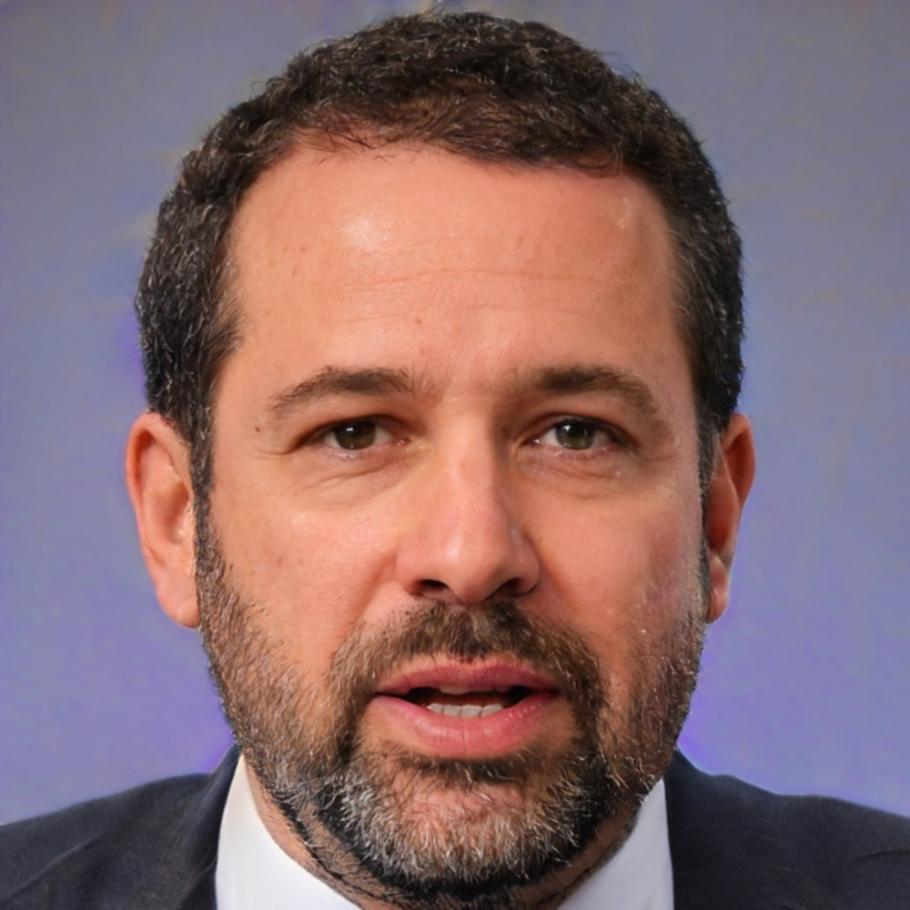











Welcome to a space where teaching meets creativity and investment terminology comes alive. Here, we focus on building your expertise with fresh approaches that make complex concepts clear and, dare we say, even enjoyable.
Reach Me99%
120K+
4.6
30K+
92%
A surprisingly common mistake I’ve seen when it comes to investment terminology is the misuse—or overuse—of the word "risk." People toss it around as if it’s a one-size-fits-all concept, but in practice, it’s incredibly nuanced. Is it credit risk? Market volatility? Liquidity constraints? Each of these carries its own implications, and lumping them into a vague notion of “risk” doesn’t just confuse communication—it can lead to poor decision-making. This misunderstanding often reveals a deeper issue: many professionals know the terms but not how they interconnect or when they actually matter. For example, someone might understand the textbook definition of “alpha,” but can they explain why it’s relevant in a specific portfolio strategy—or how it differs fundamentally from beta in a real-world scenario? Developing these skills isn’t just about speaking the language fluently; it’s about thinking in it. And that’s a huge leap. What becomes possible when you truly develop this depth of understanding? For one, you stop getting caught off guard in high-stakes conversations. Imagine sitting in a meeting where someone casually mentions “duration risk,” and instead of nodding along vaguely, you can pivot the discussion to the specific implications for your firm’s fixed-income strategies. That kind of confidence transforms how others perceive you—it’s not just about knowing the terms, but knowing when and why they matter. But beyond professional credibility, something more subtle happens: you start noticing patterns others miss. You see how a poorly understood term—like “hedging”—can lead to misaligned strategies or even unnecessary costs. And by thinking critically about these terms, you can cut through jargon to find clarity in chaotic situations. It’s not glamorous, but it’s powerful. Isn’t that what expertise is supposed to feel like?
The journey starts with confusion—jargon crashing like waves against the mind. Students grapple with terms like "arbitrage" or "amortization," words that initially feel cold and distant, like a locked door with no key in sight. But then, something shifts. They learn to decode the language piece by piece, realizing "bear market" isn’t some exotic animal but a feeling, a mood that looms over markets. It’s strange how often these terms carry an emotional weight, isn’t it? The first breakthrough often comes not in the classroom but over coffee, when someone casually mentions a "stock split" and it just clicks. And yet, moments of clarity are always followed by moments of doubt—why does "yield curve inversion" sound less like finance and more like physics? There’s an odd delight in the concrete, though. Picture a student staring at a financial statement, trying to make sense of "depreciation," their pencil tapping nervously on the desk. Numbers seem to blur until they don’t—until the realization hits that it’s less about the math and more about the story those numbers tell. But the process isn’t linear. One day, it feels like scaling a mountain, the next like you’re tumbling back down. And then there’s the unexpected challenge: explaining a term like "dividend reinvestment" to a friend who doesn’t care about finance. That’s when the real test begins—not just understanding the language but making it your own.

Incredible! Learning investment terms felt overwhelming, but connecting with others made it click faster than I ever imagined.

Fully diving into investment terms felt like learning a new dialect—confusing at first, but now it all clicks like pieces in a puzzle.

"Truly, the group chats made all the difference—sharing tips and breaking down terms together felt like a win every time!"

"Struggling with investment jargon was overwhelming, but learning the terms gave me confidence to make smarter decisions—grateful!"

"Each lesson made tricky terms feel approachable—who knew understanding P/E ratios could actually be fun?"
Choosing the right investment in your education isn’t just about the price tag—it’s about finding what truly aligns with your goals and the way you learn best. We’ve designed our options with flexibility in mind, so you can focus less on comparing costs and more on what feels like the right fit for your journey. Discover which of our learning plans best fits your goals:
The "Classic" participation format is a straightforward but smart choice for building investment terminology knowledge. Participants contribute their time—primarily through engaging with curated learning materials and interactive sessions—and in return, they gain structured, actionable insights into essential financial concepts. One standout feature here is the balance between guidance and self-paced exploration; it’s not overwhelming but still keeps you accountable. People often mention how the mix of concise resources and real-world examples makes abstract terms feel surprisingly intuitive, even for beginners. Also, there’s a sense of community—like you’re not tackling this alone, which can be motivating. That blend of practical learning, flexibility, and shared experience is what makes this tier click for so many.
380 $The "Economy" tier offers a straightforward exchange: participants invest their time and attention in exchange for foundational investment terminology in a no-frills format. Two things stand out here. First, it’s affordable—great for those curious but cautious, maybe just dipping their toes into this world. Second, it values simplicity over extras; you get clear, digestible content without the added layers that might distract or overwhelm. I've heard from some who like it because it fits into a busy day—catching a quick lesson during lunch feels manageable. It’s less about bells and whistles, more about getting the essentials when time or budget is tight.
320 $Vilintos Jirandro makes learning investment terminology feel like a conversation with a really smart friend who’s always got your back. Imagine logging into a platform where the terms that once sounded intimidating—like "arbitrage" or "diversification"—are broken down into bite-sized lessons that somehow just click. You’re not bombarded with endless jargon or dry definitions; instead, you’re guided through short, engaging videos and interactive quizzes that make you think, “Wait, that wasn’t so hard after all!” And they don’t stop at just explaining—the lessons are packed with relatable examples, like comparing financial concepts to things you deal with every day, such as planning a vacation or splitting a dinner bill. Plus, you can go at your own pace. If something doesn’t stick the first time, no big deal—you can revisit it anytime without that awkward feeling of holding up a class. It’s not just about memorizing words; it’s about really getting how and when to use them, so when you finally hear "bull market" in a meeting, you can nod along like you’ve known it forever.
Rosa
Head of Operations
Have you ever found yourself staring at a financial statement or an investment portfolio, feeling like it’s written in another language? It’s frustrating, isn’t it? That’s the gap Vilintos Jirandro has been quietly but confidently bridging for years. They’re not just about teaching investment terminology—they’re about transforming those “aha” moments into a solid foundation of financial fluency. What’s fascinating is how their philosophy grew out of watching the world of education evolve. People don’t want to memorize jargon anymore; they want to understand it, connect with it, and feel like they truly own the knowledge. That’s exactly what Vilintos Jirandro focuses on: real learning that sticks. The culture there feels like a mix between a think tank and a cozy study session with friends. It’s not all spreadsheets and formulas—they’ve built their community around curiosity and shared growth. You’ll find instructors who are passionate about what they do, not because they have to teach it, but because they live it. They’re the kind of people who will happily go off on tangents about market trends or the history behind a particular term, just to make sure you get it. And that kind of passion is contagious. It’s one thing to be taught; it’s another thing entirely to feel like you’re learning alongside someone who cares as much about your progress as you do. What really stands out is how they approach professional development. It’s not about throwing a bunch of technical terms your way and calling it a day. They’ve designed their courses to grow with you. Whether you’re a curious beginner or someone looking to sharpen your expertise, they have this knack for meeting you exactly where you are. And the best part? They don’t make you feel like you’re climbing some impossible mountain. Instead, it’s more like they’re walking alongside you, pointing out the shortcuts and making sure you’re enjoying the journey. Honestly, that’s pretty rare. And let’s talk about their technical support—because, let’s face it, online learning can get messy. Ever had a tech issue that made you want to throw your computer out the window? Yeah, me too. But with Vilintos Jirandro, it’s different. They’ve got this way of making you feel like you’re never alone. Whether it’s something as simple as navigating the platform or as complex as troubleshooting a glitch, their team doesn’t just fix problems—they listen. And somehow, they manage to do it all without making you feel like just another ticket in the queue. It’s little things like that which make you realize they’re not just in the business of teaching—they’re in the business of people.
Gaven has a knack for teaching investment terminology in a way that sneaks up on you. He doesn’t just define terms and move on; instead, he unpacks them layer by layer, often weaving in unexpected anecdotes or analogies. Vilintos Jirandro has mentioned more than once how Gaven’s approach has reshaped parts of the curriculum, adding a depth that wasn’t there before. Students often walk out of his sessions with those rare “Wait, I get it now!” moments—usually sparked by some subtle connection he’s drawn between, say, a complex financial concept and a random observation about human behavior. One student once joked that Gaven could probably explain an IPO by comparing it to ordering coffee at a crowded café, and honestly, that’s not far off. His perspective is rooted in years of juggling two worlds—teaching and practicing. He knows where students stumble because he’s been there himself, watching those concepts trip people up in real-life scenarios, not just on paper. The classroom itself feels less like a lecture hall and more like a brainstorming session, with Gaven occasionally pausing mid-thought to let students wrestle with an idea. It’s not unusual for him to drop some obscure term like “contango” casually into the mix, only to circle back 20 minutes later after the class has puzzled over it. And while he’s not one to brag, his occasional articles in industry journals have quietly shaped how professionals think about technical jargon—though if you ask him about it, he’ll probably just shrug it off. Nearly every former student has a story about how Gaven helped them push through something they thought they’d never understand. For one, it was the way he broke down derivatives into bite-sized pieces without ever dumbing it down. For another, it was how he reframed a textbook definition into something that actually mattered in a real-world scenario. He’s not flashy. He doesn’t do motivational speeches or try to dazzle anyone with gimmicks. But somehow, he makes the hard stuff stick.
Stay on track with the latest educational tips and helpful resources.
Continue using our site means you accept our cookie policy.